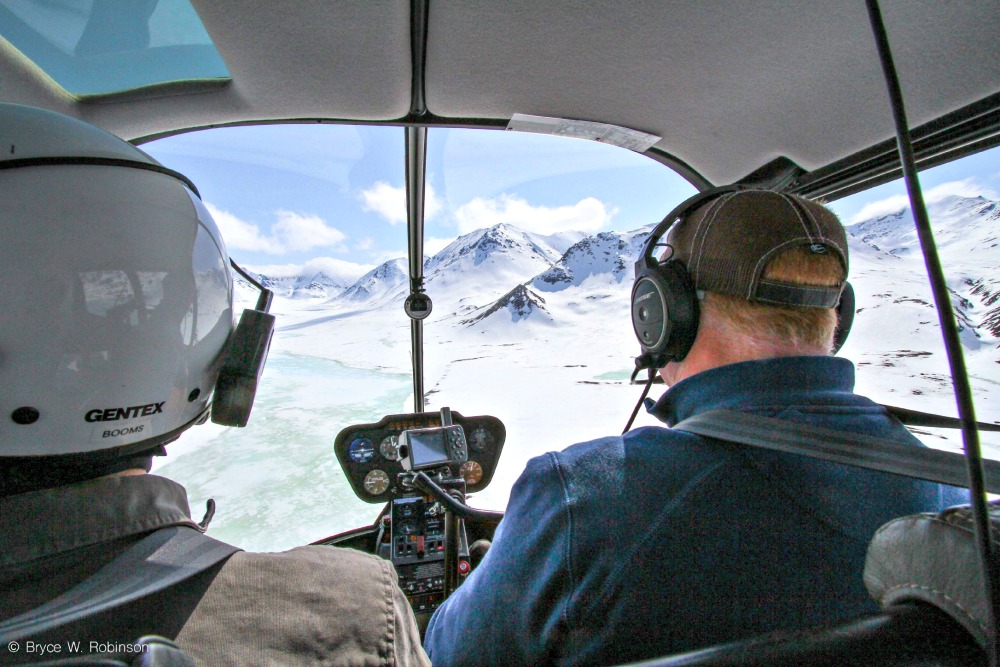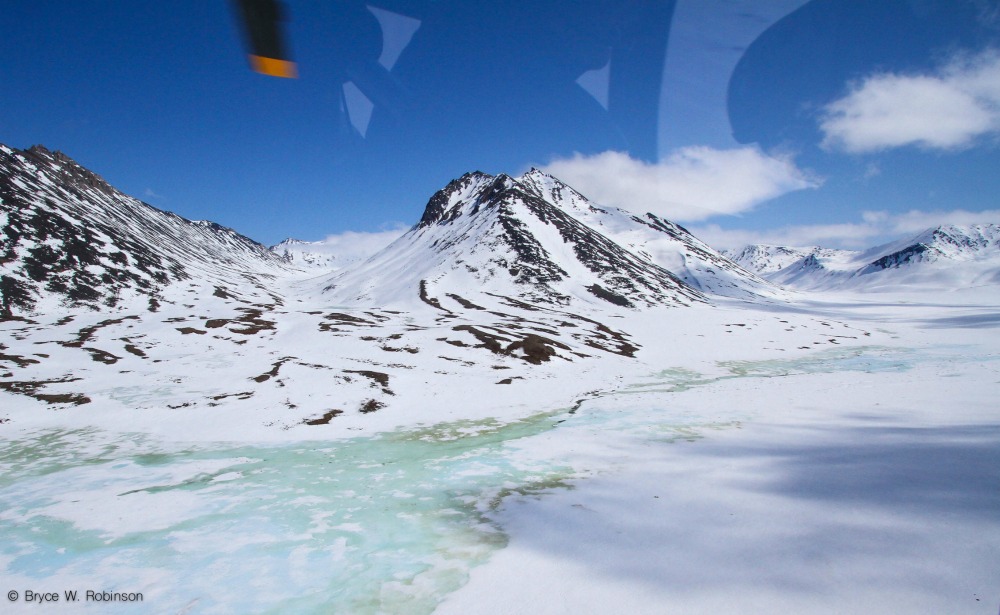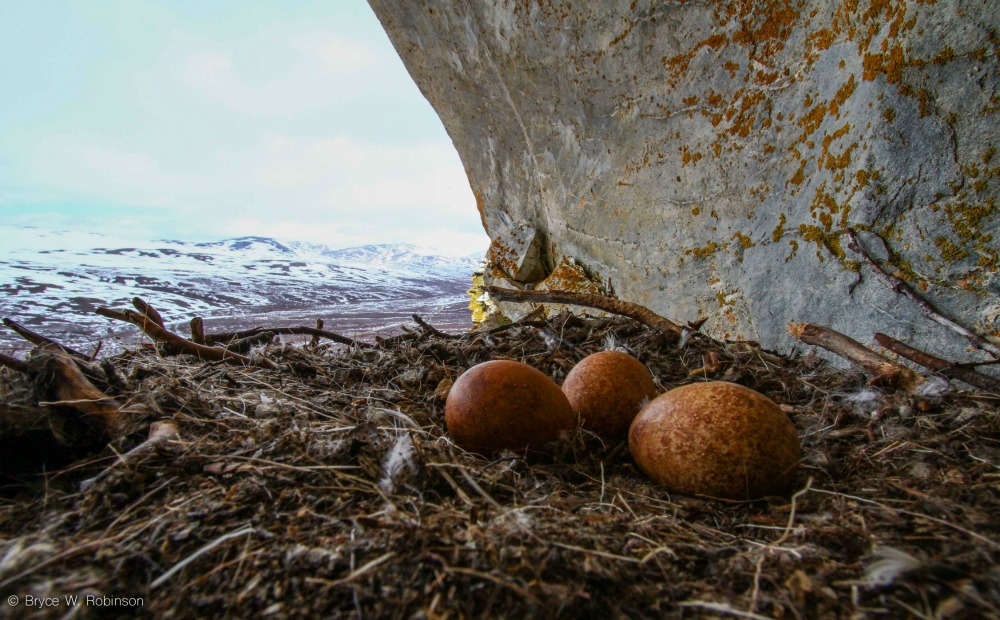
It’s simple: conducting research on Gyrfalcons in Alaska would not be possible without the use of a
helicopter. There is too much country to cover, and few or no roads. In the spring the tundra is
covered in mushy, melting snow, too soft for hiking or a snow mobile. If we try and hike it we are
in a sorry situation – having to alternately put on and take off snow shoes as we cross soggy
tundra, then snow, and on and on for miles. You get the picture; “arduous” doesn’t begin to
describe it. Besides, time is critical. To accomplish our research goals we need to know the
locations of all Gyrfalcon nests as early in the season as possible. Our goal is to install
cameras in nests before the eggs hatch. Eggs are tough. When we enter the nest the female may
leave for an hour or more. Eggs can take the cool weather. Small chicks are another story. They
are vulnerable to weather and temperature for their first week of life. To avoid any harm to the
birds we are working to protect, we need to get to the nests early while they still contain eggs.
Getting to nests early means finding nests early. That is where the helicopter comes in. We use a
list of historic nests sites, and we fly to check them for nesting Gyrfalcons one by one. This
means a lot of circling, a lot of sharp turns, and a lot of backwards and side to side movements.
The bush pilots love this type of flying, but it isn’t for those with a weak stomach. I’m lucky to
be one of the few that enjoys the aerobatic flights, but I’ve been told many times of hardy Alaska
biologists that come back from these nest surveys green in the face. Soon we will post some videos
so you can see what it is like to nest search from a helicopter. You can ask yourself if it is
something that would turn your stomach.
Between nest sites we take in the view. The scenery is unmatched. I’ve never seen a landscape that
is so obviously harsh and unforgiving, yet so inviting. These views from the helicopter are places
visited or seen only by a handful of humans. I do my best to recognize this and not take any of the
scenery for granted.

At the end of the flying, we have a list of Gyrfalcon nests ready for visits. The next step is to
install our cameras, aimed to capture the dynamics of what it takes to raise young Gyrfalcons.
We gratefully acknowledge the Eppley Foundation for support of this helicopter survey. Without their partnership it wouldn't have happened.

Written by Bryce Robinson, 26 May 2015, from Nome, Alaska.